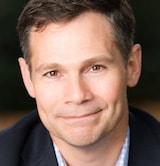Bringing tangibility to social determinants of health
Sign up for news and updates in population health
Jul 11, 2017
At Philips, we’ve been talking a lot lately about social determinants of health. For comprehensive population health management to succeed, these factors need to be addressed as impacts on patient engagement, care plans and adherence, personalized preventive care and of course outcomes and costs. Consensus is building on identifying high-priority determinants and acting upon them to bridge clinical care with community services — simply understanding where the gaps are and how to fill them — and I invite you to read a recent white paper on the topic detailing progress and goals encompassing public-private ventures, initial case studies and the role of healthcare information technology. And while we are not yet at a tipping point, we are moving from theory to tangibility.
U.S. model underway
This process should be significantly aided and informed by a national model begun in May through the CMS Innovation Center (CMMI), and we are particularly excited that a longtime Philips Wellcentive customer has been selected to participate. The Accountable Health Communities Model is focusing on housing instability, food insecurity (the topic of a Philips case study in the white paper), utility needs, interpersonal violence and transportation needs as the factors to address, overcome and bridge into the success of clinical care for Medicare and Medicaid beneficiaries. Participating organizations are diverse, which is the point in understanding and tackling the importance of social determinants of health. They include health systems, governmental health departments, research organizations, ground-level community service organizations, universities and hospitals. The Communities Model has been established with equal parts science and common sense to build community-based yet far-reaching results. Science? CMMI looked at areas where ER utilization was above the national average, for example, in assessing impactful participants. Common sense? Applicants were asked to explain existing partnerships that could saturate communities. In one example, a participating foundation noted its relationship with a redevelopment committee itself involved with 50 businesses and community organizations in one city. This is the kind of collaboration a population health management mindset can bring.
The health IT factor
From a health IT standpoint, the goals for end-to-end PHM solutions are creating and maintaining patient registries, data management via documentation and tracking, identifying care management gaps and tracking referral loops. Adding social determinants data can enhance a scalable and mobile longitudinal patient record.
Overall, this program seeks to screen beneficiaries for social determinant needs, identify available services and connect them. The important last step for community services and healthcare delivery organizations is to align them through data builds and relationships that will be lasting.
Toward global best practices
These tenets and goals are themselves not new, as they line up with addressing social determinants and global health inequities as historically envisioned and acted upon by the World Health Organization, for example, often in countries without large infrastructure and financial resources. Domestically in the United States, we are catching up by realizing that value-based care can and should mean many things, especially in the holistic realms of chronic care, prevention and sustainability. It’s a matter of pursuing continuous healthcare versus sick care. We will be watching this new program closely as it adds to the body of knowledge Philips utilizes in its pursuit of population health management on a global scale.
About the author

Mason Beard,
Chief Solutions Officer, Philips PHM
Mason Beard is Chief Solutions Officer for Philips PHM. He leads the strategic and operational development and programs of the Philips Population Health Management group. He is the co-founder of Philips Wellcentive and has deep experience in developing flagship healthcare IT innovations.
You are about to visit a Philips global content page
Continue